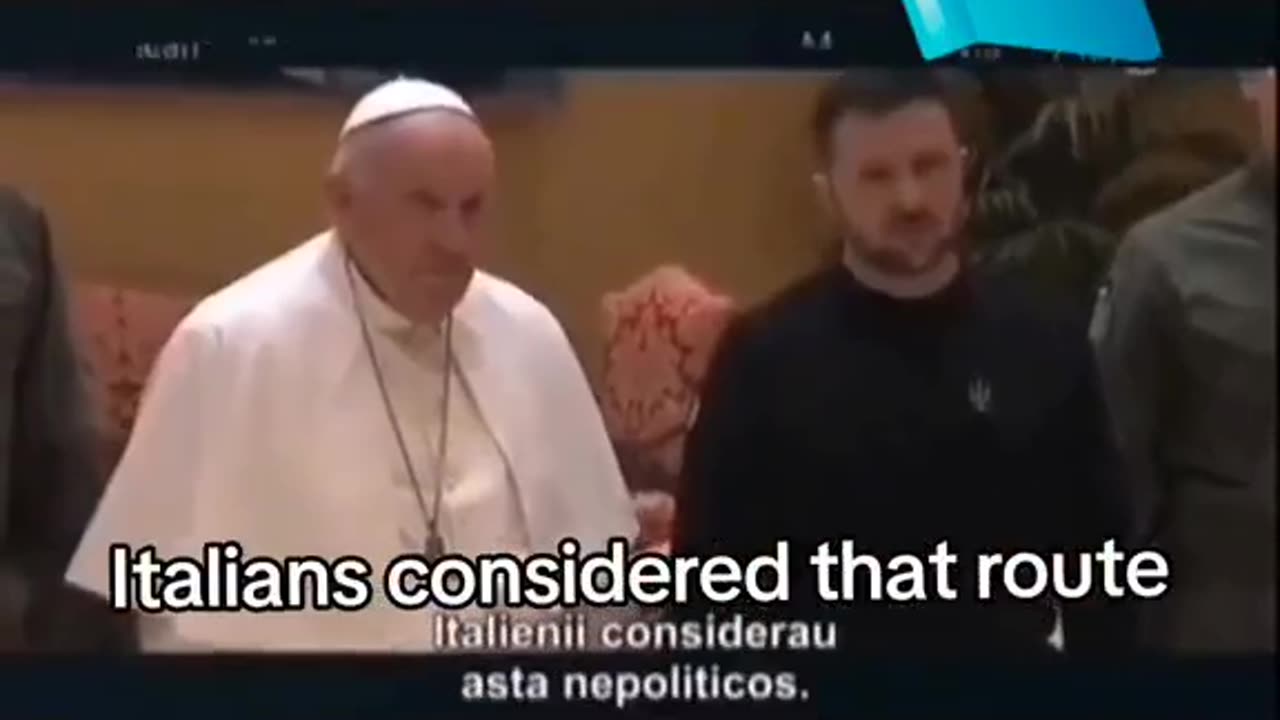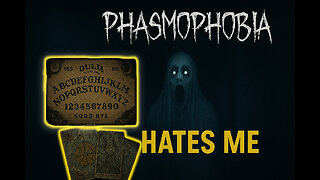Premium Only Content

Ukraine Nazi President Visits Vatican Nazis
Wow 😳 just wow. this is the first I hear of this visit he had with the Vatican. Unbelievable.
TikTok Scott Ritter YouTube video shared by ce5.workshop
Vatican Ratlines (World War II aftermath)
[source: Medium.com]
Ratlines were a system of escape routes for German Nationalist Socialists and other fascists fleeing Europe at the end of World War II. These escape routes mainly led toward havens in Latin America, particularly Argentina, Paraguay, Colombia, Brazil, Uruguay, Mexico, Guatemala, Chile, Ecuador and Bolivia, as well as in Switzerland. Other destinations included Australia, Canada, and the Middle East. There were two primary routes: the first went from Germany to Spain, then Argentina; the second from Germany to Rome to Genoa, then South America.
**********
The Hidden History Of Ratlines, The System Of Escape Routes That Helped Nazis Flee Europe
[Allthatisinteresting.com]
After World War II, thousands of Nazi war criminals escaped justice with the help of ratlines — which were set up by the Vatican, South American politicians, and sometimes even U.S. spies.
As the dust settled after World War II, scores of Nazis tried to escape punishment for their crimes by fleeing Europe. And thousands made their way to South America through secret networks nicknamed “ratlines.”
Helped by South American politicians, the Vatican, and even U.S. intelligence, Nazi war criminals successfully traversed escape routes from Europe to countries like Brazil, Chile, and Argentina. Some of them were eventually located and brought to justice. But many more Nazis were never captured.
This is the shadowy story of ratlines, the spidery system of escape routes created by American spies, South American politicians, Vatican officials, and other individuals who helped Nazi war criminals flee Europe.
The Emergence Of Ratlines After World War II
The word “ratline” comes from the sea. According to Slate, it refers to ropes near a ship’s mast, which sailors might have climbed while trying to survive a sinking ship. But after World War II, it took on a different connotation.
Then, thousands of Nazis seeking to flee Europe did so via the so-called ratlines that offered an escape route to various countries in South America, mostly to Chile, Brazil, and Argentina. They were assisted in large part by Argentine President Juan Peron, who had grown to admire European dictators like Adolf Hitler and Benito Mussolini.
The Guardian reports that Peron’s admiration stemmed from his time as a military attaché in Italy and his relationships with SS agents. Additionally, Peron saw the Nuremberg trials as an “insult to military honor” and sought to bring scientists, engineers, and nuclear experts into Argentina.
So, in 1946, History reports that Peron enlisted Argentine Cardinal Antonio Caggiano to open a dialogue with his French counterparts. Caggiano then let them know that Argentina would be willing to accept Nazi collaborators.
The ratlines were officially open. And before long, others would join Peron in helping Nazis escape from Europe and start new lives in South America.
How Nazis Escaped To South America
According to Deutsche Welle, the ratlines did not have any formal structure. Rather, they emerged spontaneously after World War II. But many Nazis who escaped via the ratlines followed a similar path across the Alps to Italy.
Once in Italy, many Nazis followed the “monastery route,” which allowed them to hide out in local monasteries. Most then traveled to Rome, where they were assisted further — sometimes by American and British spies and sometimes by prominent members of the Catholic Church.
As Philippe Sands, the author of The Ratline, told NPR, American and British spies helped Nazis for a single reason: to fight communism.
“They were virulently anti-communist,” Sands explained. “In 1948 and ’49, there was a tremendous concern amongst the British and the Americans in particular that Italy would be the launching pad for the Soviet Union… the British and the Americans started recruiting [Nazis] and, indeed, I think, used the ratline, the escape route to Argentina, as a recruitment tool.”
At the same time, many Nazis found refuge within the Vatican. For instance, Bishop Alois Hudal helped Nazis because he believed they were “completely blameless” and that by helping them escape he “snatched them from their tormentors with false identity papers,” according to Deutsche Welle.
-
 3:54
3:54
GlobalAwareness101
3 days agoIsraeli Zionist Kabbalist Talmudic Jewish Hebrew language was made up in 1915.
124 -
 LIVE
LIVE
Drew Hernandez
8 hours agoEPSTEIN VICTIMS SPEAK OUT & TRUMP DOUBLES DOWN
899 watching -
 1:36:41
1:36:41
FreshandFit
4 hours agoWe Are QUITTING YouTube...
34.4K29 -
 2:34:22
2:34:22
TheSaltyCracker
4 hours agoDrug Smugglers Blown Up 9-03-25
71.4K141 -
 LIVE
LIVE
VapinGamers
3 hours ago $0.01 earnedGrim Trials - Game Review/Playthru - Rougelight Dungeon Crawler - !rumbot !music
74 watching -
 2:47:55
2:47:55
Mally_Mouse
10 hours ago🎮 Let's Play!! -- Jak 2 pt. 16
30.9K2 -
 52:23
52:23
MattMorseTV
5 hours ago $0.63 earned🔴The Cartels are SCREWED.🔴
98.7K118 -
 1:32:46
1:32:46
Badlands Media
18 hours agoAltered State S3 Ep. 44
41.4K -
 21:09
21:09
Bearing
15 hours agoAustralian “Racist” Protest EXPLODES 💥 Glowies, Brawls & Media Spin 📣
22.1K30 -
 2:53:23
2:53:23
Tundra Tactical
3 hours ago $0.01 earnedTwo Vets, One Ouija Board, Zero Good Decisions
19.6K1